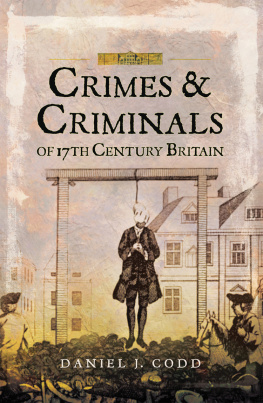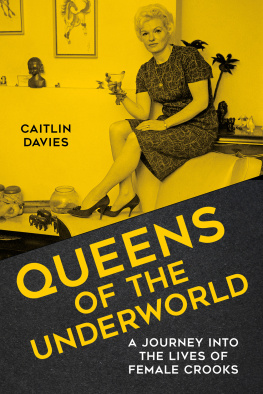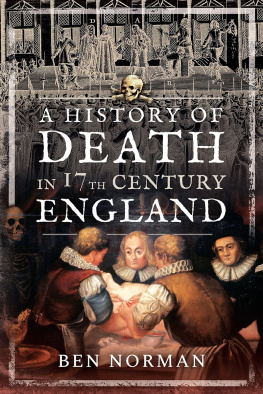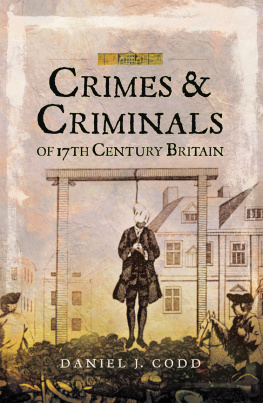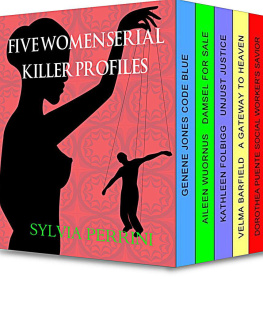First published 1994 by Pickering & Chatto (Publishers) Limited
Published 2016 by Routledge
2 Park Square, Milton Park, Abingdon, Oxon OX14 4RN
711 Third Avenue, New York, NY 10017, USA
Routledge is an imprint of the Taylor & Francis Group, an informa business
Copyright Taylor & Francis 1994
Introduction and notes to this edition copyright Janet Todd and Elizabeth Spearing 1994
All rights reserved, including those of translation into foreign languages.
No part of this book may be reprinted or reproduced or utilised in any form or by any electronic, mechanical, or other means, now known or hereafter invented, including photocopying and recording, or inany information storage or retrieval system, without permission in writing from the publishers.
Notice:
Product or corporate names may be trademarks or registered trademarks, and are used only for identification and explanation without intent to infringe.
BRITISH LIBRARY CATALOGUING IN PUBLICATION DATA
A catalogue record for this title is available from the British Library.
ISBN-13: 978-1-85196-087-3 (hbk)
New material typeset by P&C
Mary Frith (Moll/Mal Cutpurse) and Mary Carleton (the German Princess) were the most famous female rogues of seventeenth-century England. Despite this, rogue is not a title Mary Carleton would have claimed in her vindication, and Mary Frith seems to have seen herself primarily as a practical business person. Both became historical and mythical figures who attracted to themselves several extra stories of pranks and trickery. These stories sometimes linked the two together in the public mind, and both were thus connected with other dubious and counterfeiting females such as Pope Joan.
The Case of Mary Carleton and The Life and Death of Mrs. Mary Frith were published only a year apart in the early 1660s, soon after the restoration of Charles II. The new regime still had traces of its original fascination and the public was not yet disillusioned with its self-indulgence and inefficiency; part of the attraction of the female rogues, as of many well-known and well-documented criminals, was that they openly espoused the royalist cause and associated themselves not only with royalist politics, but also with Stuart glamour. The nonchalant power associated with the image of the cavalier could be shared by the charismatic transgressor and the self-publicist seeking to legitimise her nonconformism.
Mary Carleton and Mary Frith both lived before the time when a Romantic interest in the self turned autobiography into a familiar literary form; even subjective biography was not common, memoirs rather than self-analysis were the order of the day. Nor would those who were writing about themselves have read many other examples; much of the autobiographical writing of the time was not published until later. As women from the lower classes, Frith and Carleton were among those least likely to portray themselves for posterity; those few who did so were almost always deeply religious women describing their spiritual lives, often at the behest of a pastor. Their most important precursor was in fact Margery Kempe, who had probably dictated her autobiography in the 1420s, and was, like them, a subversive woman who rejected enclosure and was frequently in conflict with the law. A sense of the gap between the assigned self and the experienced self seems to be one of the motives for autobiography in the period before autobiography existed as a recognised genre.
Generic issues are a concern of both texts. The readers of The Case of Mary Carleton are asked to cast a favourable eye upon these Novels of my life, not much unlike those of Boccace, but that they are more serious and tragical. The address to the reader at the beginning of The Life and Death of Mrs. Mary Frith also considers the question of genre, feeling that Mal Cutpurse deserves a place in the Rationale and Account of Timefarre beyond Prince Crispine and his Lady, and the rest of that Leud rout, and band of Knight Errantry. Mary Frith herself (if the narrative voice is indeed her own) is conscious that she is writing in a tradition of picaresque literature, following the laudable example of others, who have in part preceded me as Seignior Gusman, and the Spanish Tribe of Cheaters.
One of the most important forms of narrative in the sixteenth and seventeenth centuries was romance, available to a much wider public since printed books had become more widespread. Various types of story of love and adventure, of ladies of matchless beauty and the knights of unequalled strength and skill in arms who wandered the world earning their hearts and hands, had been internalised and had probably become part of the imaginative baggage of most reading people. Margaret Cavendish, Duchess of Newcastle, may have claimed that she never read a Romancy Book throughout in all my life, but she nevertheless knew exactly what such a book was like. Both of the counterfeit ladies whose own stories are told in this volume give evidence not just of having read romances, but of sometimes identifying with the fictional beings who were the subjects of other narratives, and of trying to see how they or some version of their own personae might fit into such a story. If Carleton sees herself as a Lady Errant, giving lustre to a romance, Frith pretends that she is a squiresse as she gallops across London on horseback for a wager. They are both also aware of rogue literature as romances opposite as in Mary Friths allusion, quoted above, to Mateo Alemns Guzmn de Alfarache. The picaresque genre is often seen as defined by a kind of unromantic realism, yet the picaro is as much a fictional entity as the knight errant. Social historians such as J. A. Sharpe1 suggest that there is more evidence for vagabond organisation, hierarchy and canting in literature than in reality, and he sees a lack of correspondence between the impression given by the rogue literature and the reliability of vagrant or metropolitan crime as it appears in court records. Popular ideas about crime were partly formed from literature, but this literature was perhaps more an indication of anxiety about social disruption and an attempt to deal with this anxiety by giving it a manageable form, than a reflection of reality.
The literary form which one would expect to correspond most closely with social reality is the criminal biography, which became increasingly popular in the late seventeenth and eighteenth centuries. It culminated in the famous fictional rogue biographies of Daniel Defoe, especially Moll Flanders, with its frequent echoes of the tale of Mary Carleton. However, as Ernest Bernbaum has pointed out when writing about the Mary Carleton narratives, from every attempt to distinguish between fact and fiction we return, as in the case of the other criminal biographies of the time, thoroughly baffled.2 The more one reads of such works, the more one sees the same episodes, the same anecdotes, even expressed in much the same words, recurring again and again. There seem to have been a number of free-floating stories which were incorporated among more authentic details. It is thus very difficult to judge how far the stories of Carleton and Frith belong to fact or fiction; like their protean protagonists, the narratives assume a variety of shapes.



